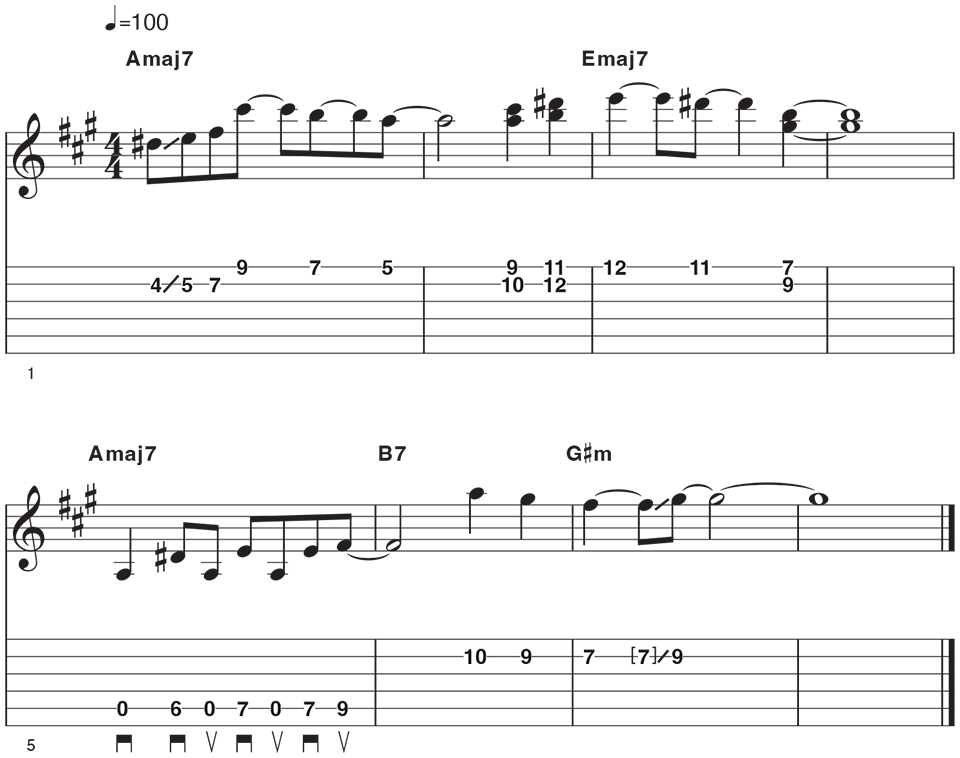Built from the fourth degree of the major scale, this mysterious-sounding mode is often used to convey hope and expectation, and has found favour with everyone from film and tv composers to instrumental rock legends Joe Satriani and Steve Vai.
The structure of the Lydian mode is quite easy to understand – it's the same as the major scale but with a sharpened 'augmented' 4th degree. Compare the notes and intervals of the two scales (in the key of A here) and you'll see what we mean:
A major notes: A B C# D E F# G#
A Lydian notes: A B C# D# E F# G#
A major intervals: Root, major 2nd, major 3rd, perfect 4th, perfect 5th, major 6th, major 7th
A Lydian intervals: Root, major 2nd, major 3rd, augmented 4th, perfect 5th, major 6th, major 7th
So that's just one note different to the A major scale – D# instead of D. Easy!
However, the sonic effect of this single note is really quite amazing. Check out Joe Satriani's Flying in a Blue Dream or Yoda's Theme by John Williams to hear just how exotic the Lydian mode sounds compared to a basic major tonality.
Whether you're looking for uplifting sounds, tension and release in your music, or simply a more interesting approach to playing over major chords, the Lydian mode can deliver!
We explain all here in our video. Scroll down to find the tab for our Lydian chord progressions and Lydian guitar solo.
A Lydian mode (5th position)
We'll kick off our Lydian lesson with a simple two-octave shape of the mode. As you play through this shape make sure to pay attention to where the augmented 4th, the D# note, is found within each octave.
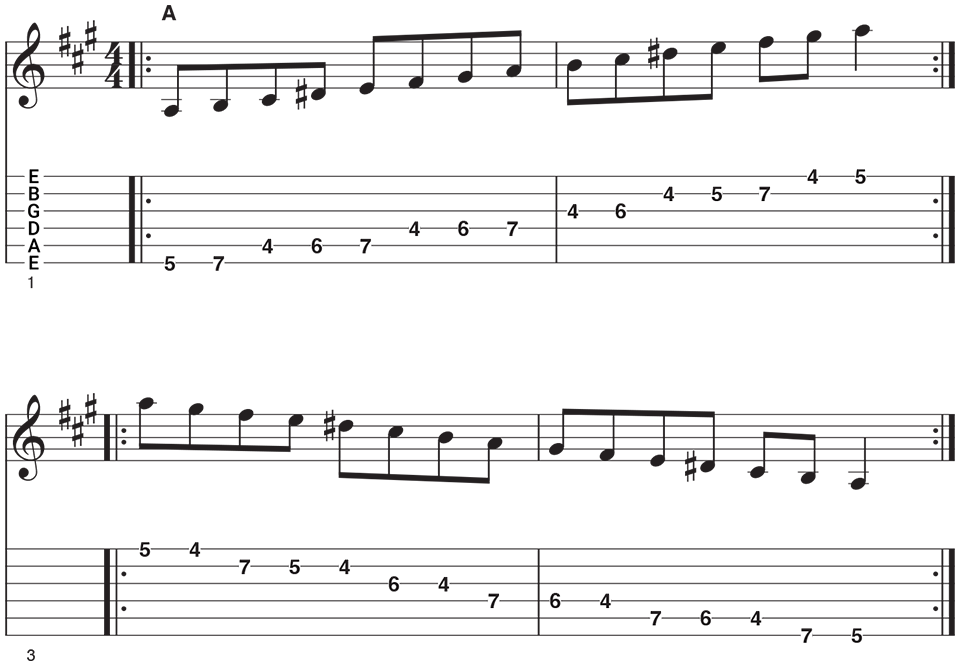
A Lydian mode (pedal exercise)
Playing up and down the fifth string like this will really help you hear the character of the mode against the open-string root note. The augmented 5th, D#, is at the 6th fret of the fifth string so really focus on that note in particular.
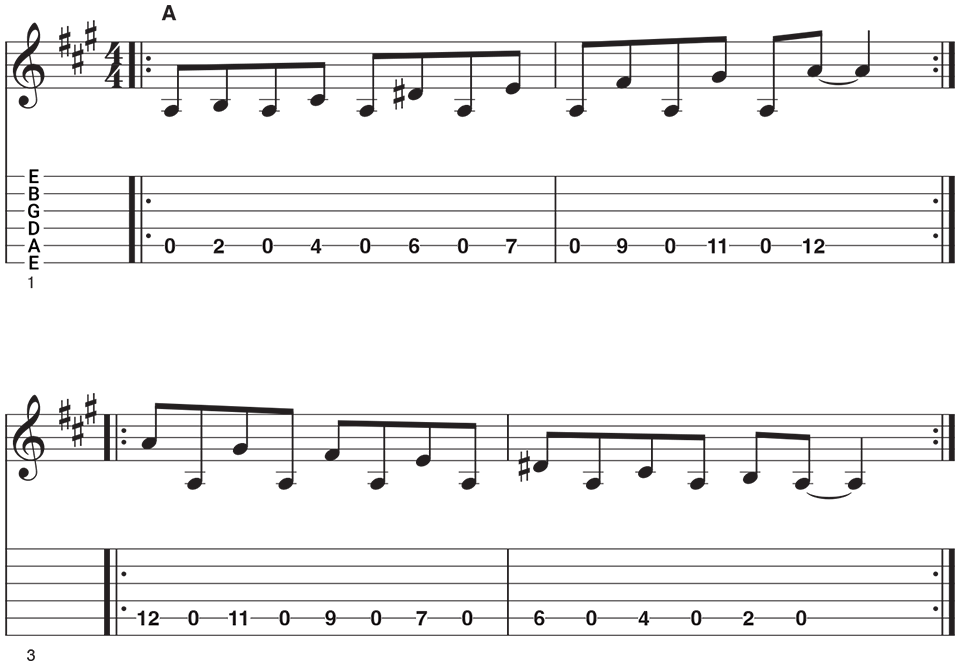
A Lydian mode (diads)
Here, we've harmonized the Phrygian mode in 3rd diads. Just remember, these are all notes from the scale – hence you'll encounter both major and minor 3rds as you play. The impact of the mode hits at the 11th fret of the first string. This is the augmented 4th, D#, in action.

A Lydian mode (triads)
Next, the mode is played in triad chords – hopefully, shapes that you already know. This is a great starting point for creating chord progressions and even licks. You can also view this as the chords played from the parent mode, E Ionian. Just start on the E chord instead of A!
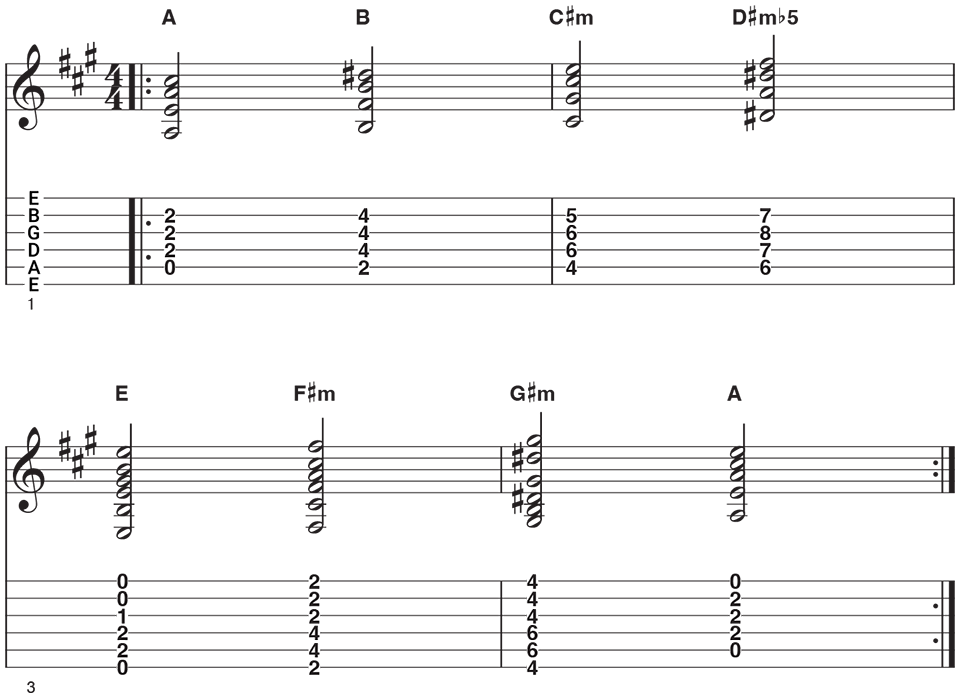
A Lydian mode (7th chords)
A 7th chord is a simple extension of the triad chords. Where each triad comprises a root, 3rd and 5th interval, 7th chords simply add, you guessed it, a 7th! The magic of each mode lies in which root note you begin on.
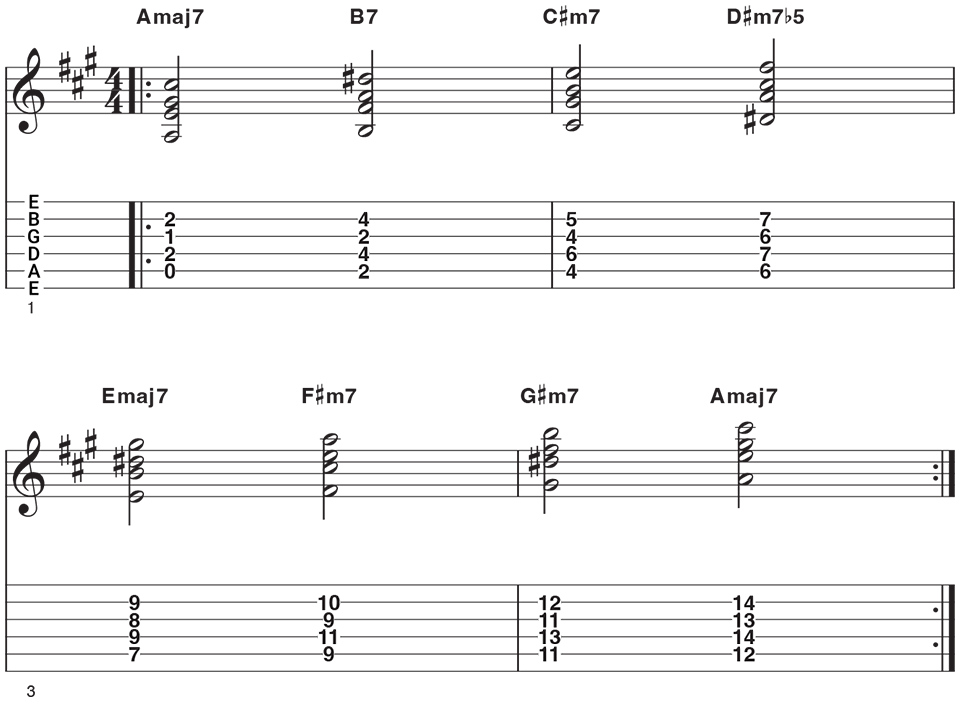
A Lydian mode (arpeggios)
You don’t have to exploit the mysterious sound of the augmented 4th in a chord progression. Instead, here in our progression, we've created an ambient pop sound by moving from the I chord (Amaj7) to the V chord (Emaj7). The D# is still here doing its job, just a bit more subtly – it's the major 7th in Emaj7.

A Lydian mode (chord riff)
Another characterful Lydian idea is to follow its I chord (Amaj7 here) with the chord a tone above – the B7. This emphasizes the uplifting sound of the Lydian mode as the B7 contains that crucial D# note. They don’t need to be played as 7th chords either. A simple A major to B major progression can give a typically Lydian flavour.
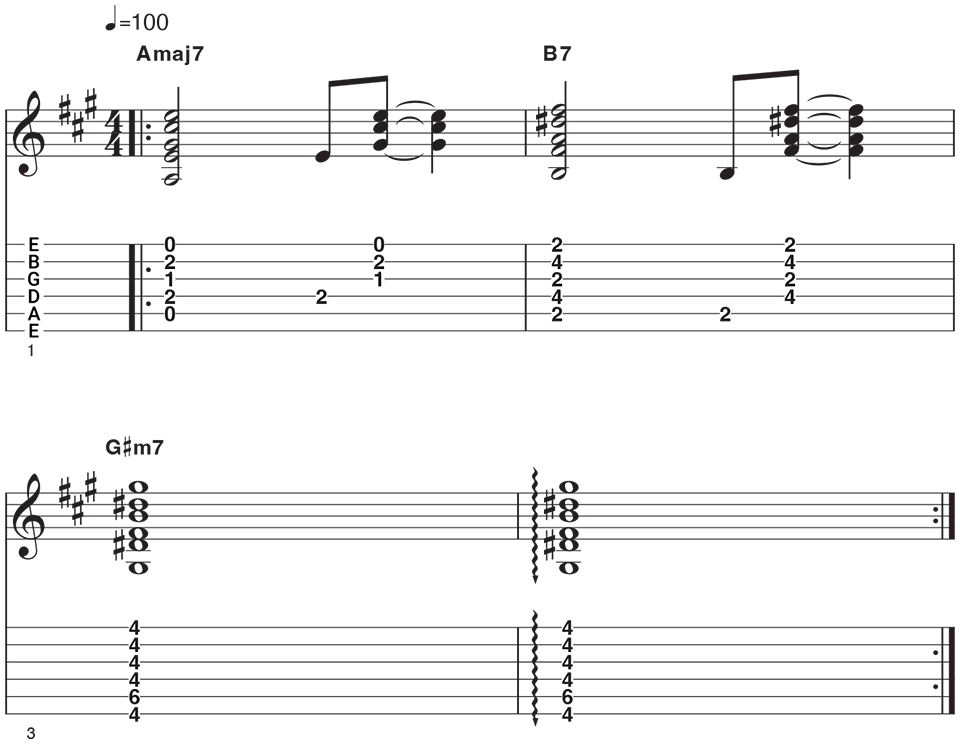
A Lydian mode (lead guitar lick)
We'll wrap up our lesson with this lead guitar line. As with the other modes, it's best to emphasize and target the character notes of the mode over the corresponding root chord. Here it means hitting a D# note on the A chord, but keep it brief as it’s a tense and unusual note that wants to move on pretty quickly!
